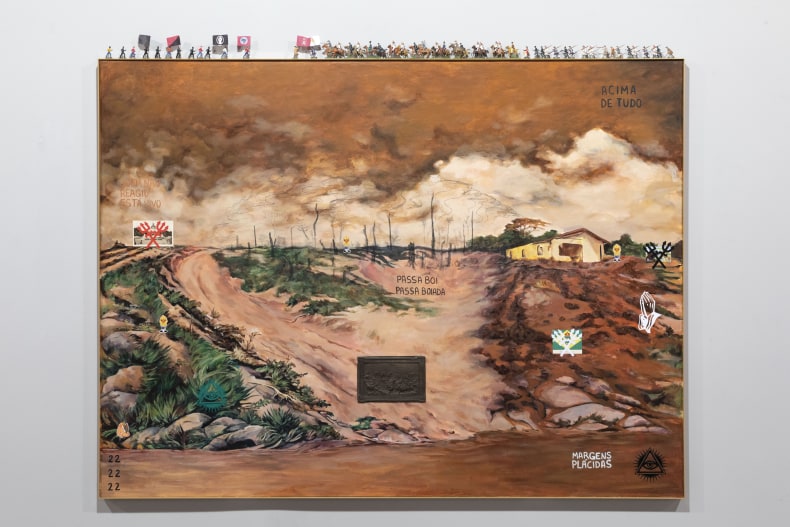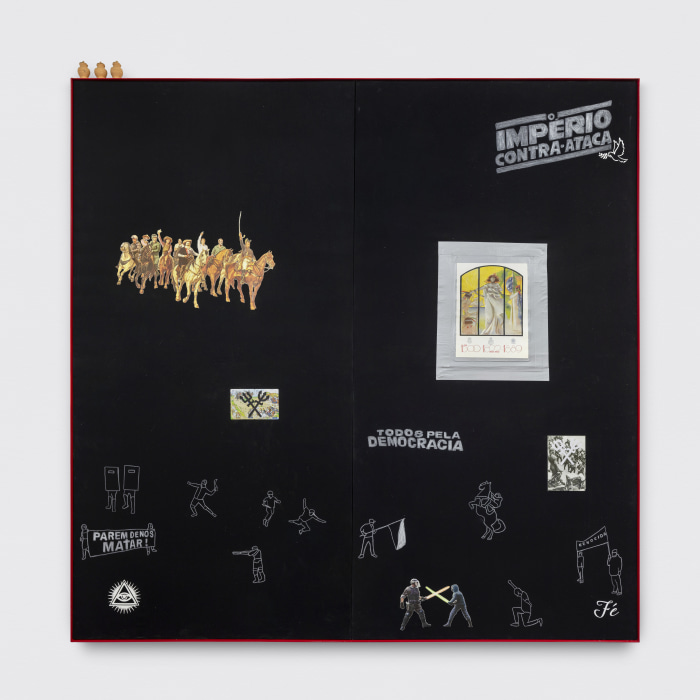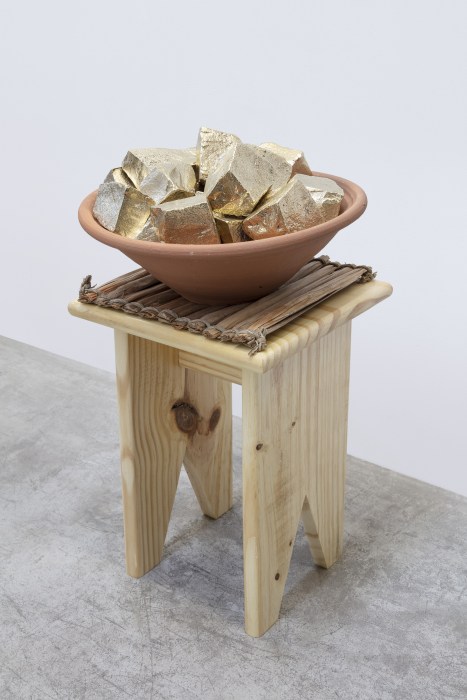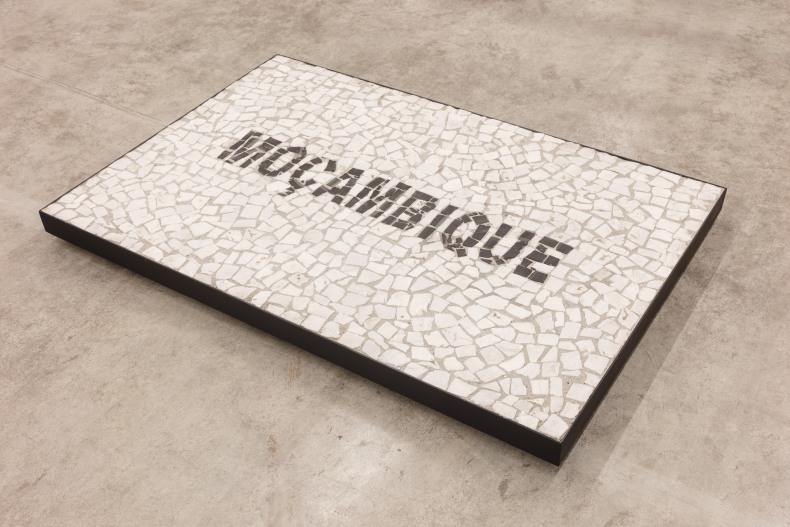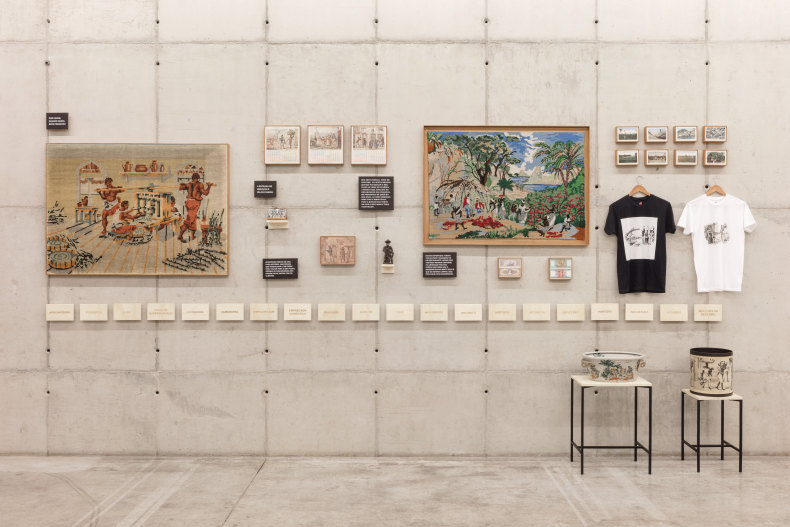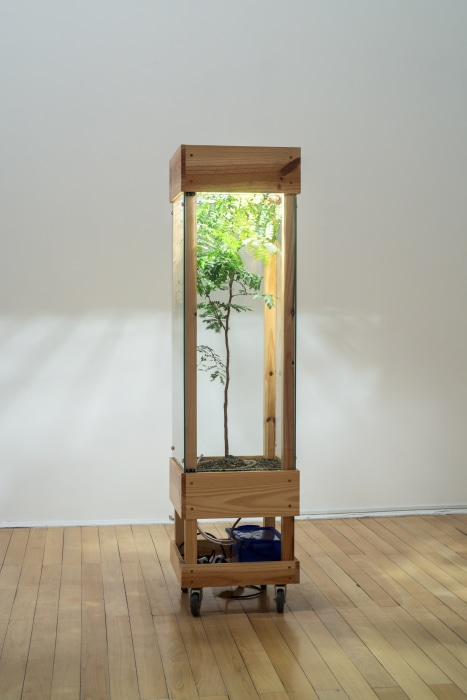Independência e morte, 2022
Biography
Through videos, installations, objects and texts, Jaime Lauriano (b. 1985, São Paulo, Brazil) explores symbols, images and myths that shape the imagination of Brazilian society, placing them in dialogue critical statements that reveal how the colonial structures of the past reverberate in contemporary necropolitics. Drawing from his own experience as a black man, Lauriano addresses the forms of everyday violence that have permeated Brazilian history since its invasion by the Portuguese and has focused, most unjustly, on non-white individuals. In this sense, the artist focuses on the historical traumas of Brazilian culture, understanding their complexities through the agency of images and discourses from the most diverse sources, whether from those considered official, such as communication vehicles and State propaganda; or unofficial ones, like videos of lynchings shared over the internet.
His criticism extends from the macropolitics of the spheres of official power,to micropolitics. Lauriano thinks about trauma not only in terms of temporality, but also spatially, using cartography to question colonial territorial disputes and constructions. Another dimension of his work is the connection with ancestral religions of African origin. The artist uses signs and symbols of the rituals of these religions, such as the white pemba, used in the making of his maps. Lauriano understands how the religious sphere was fundamental for the resistance of those that were enslaved and served as a space for maintaining their connection with their ancestral territory.
Jaime Lauriano was born in 1985 in São Paulo, where he lives and works. His solo exhibitions include: Paraíso da miragem, in collaboration with collective silence, at the Kubik Gallery (2022), in Porto, Portugal; Marcas, at Fundação Joaquim Nabuco (Fundaj) (2018), in Recife, Brazil; Brinquedo de furar moletom, at the Museum of Contemporary Art of Niterói (MAC-Niterói) (2018), in Niterói, Brazil; Nessa terra, em se plantando, tudo dá, Centro Cultural Banco do Brasil (CCBB-RJ) (2015), in Rio de Janeiro, Brazil and Impedimento, at Centro Cultural São Paulo (CCSP) (2014), in São Paulo, Brazil. Lauriano presented works at the 37th Panorama of Brazilian Art, São Paulo, Brazil (2022); and at the 11th Mercosul Biennial, Porto Alegre, Brazil (2018). He has also participated in various group exhibitions, such as: Brasil Futuro: as formas da democracia, Museu Nacional da República, Brasília, Brazil (2023); Social Fabric: Art and Activism in Contemporary Brazil, Visual Arts Center, The University of Texas, Austin, USA (2022); Histórias brasileiras, at the São Paulo Museum of Art (MASP) (2022), in São Paulo, Brazil; Afro-Atlantic Histories, at the National Gallery of Art (2022), in Washington DC, USA and at the Museum of Fine Arts (MFAH) (2022), in Houston, USA; Quem não luta tá morto – arte democracia utopia, at the Museu de Arte do Rio (MAR) (2018), in Rio de Janeiro, Brazil; Levantes, at SESC Pinheiros (2017), in São Paulo, Brazil; Territórios: Artistas afrodescendentes no acervo da Pinacoteca at the Pinacoteca do Estado de São Paulo (2015), in São Paulo, Brazil. His works can be found in institutional collections, such as: Fundação Joaquim Nabuco (Fundaj), Recife, Brazil; Rio Art Museum (MAR), Rio de Janeiro, Brazil; São Paulo Museum of Art (MASP), São Paulo, Brazil; Pinacoteca do Estado de São Paulo, São Paulo, Brazil; and Schoepflin Stiftung, Lörrach, Germany.
Exhibitions
-

eu estou aqui com toda minha gente
jaime lauriano 23.10 - 20.12.2025Nara Roesler is pleased to present Eu estou aqui com toda minha gente [I Am Here with All My People], Jaime Lauriano ’s first solo...Read more -

cosmos - other cartographies
núcleo curatorial nara roesler e laura vinci 6.2 - 15.3.2025Nara Roesler São Paulo is pleased to present cosmos - other cartographies, a group exhibition curated by artist Laura Vinci in collaboration with Nara Roesler’s...Read more -
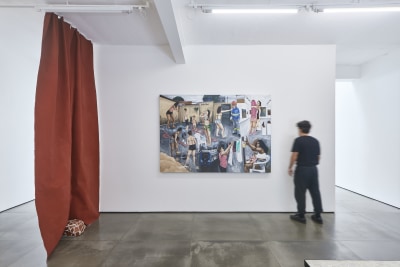
this always wonderful city
theo monteiro 29.2 - 6.4.2024Nara Roesler Rio de Janeiro is pleased to present This always wonderfrul city, a group show curated by Theo Monteiro that seeks to discuss the...Read more -

why don’t you know about western remains?
jaime lauriano 18.1 - 9.3.2024Nara Roesler New York is pleased to present Why don't you know about Western remains?, Jaime Lauriano 's first solo exhibition in the United States,...Read more
News
-
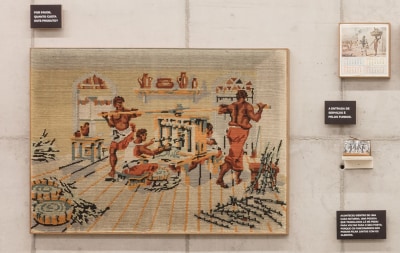
debret et les brésiliens – regards contemporains
jaime lauriano 12.5.2025The work Trabalho (2022), by Jaime Lauriano , is part of the group exhibition Debret et les Brésiliens – Regards contemporains , on view at...Read more -
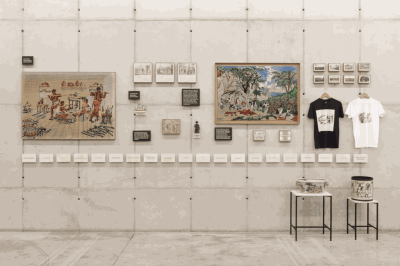
onde há fumaça
jaime lauriano 14.10.2024Jaime Lauriano is participating in the exhibition Onde há fumaça – arte e emergência climática , curated by Felipe Carnevalli, Marcela Rosenburg, and Vitor Lagoeiro,...Read more -
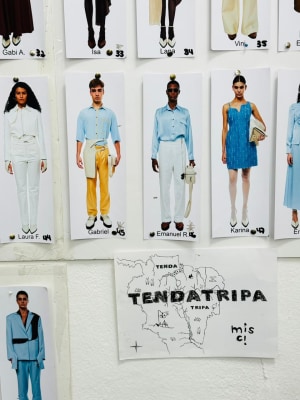
tenda tripa
jaime lauriano 23.4.2024Artist Jaime Lauriano collaborated with fashion designer Airon Martins on Tenda tripa, Misci's new collection, launched today at the iconic building of the Bienal Foundation...Read more -
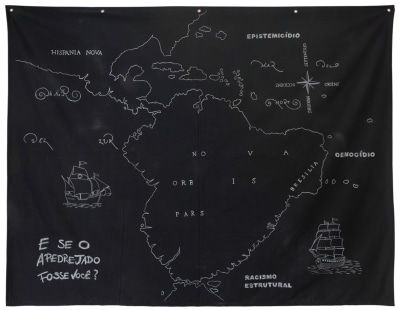
atlântico vermelho
jaime lauriano 15.4.2024Jaime Lauriano participates in the exhibition Atlântico Vermelho, curated by Marcelo Campos and designed by Gisele de Paula, which brings together works by 22 black...Read more -
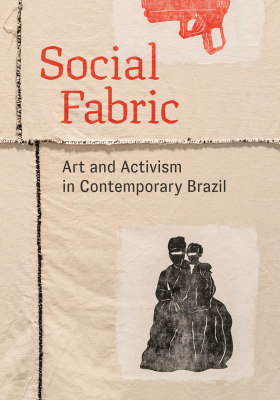
social fabric: art and activism in contemporary brazil
talk and book launch 16.1.2024On the occasion of the opening of Jaime Lauriano 's solo exhibition, Nara Roesler New York invites you to the launch of the book Social...Read more
-
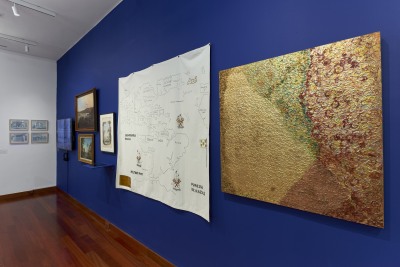
el dorado: myths of gold
jaime lauriano e laura vinci 30.10.2023Works by Jaime Lauriano and Laura Vinci are part of the group exhibition Elodado: Myths of gold , a two-part exhibition that brings together...Read more -
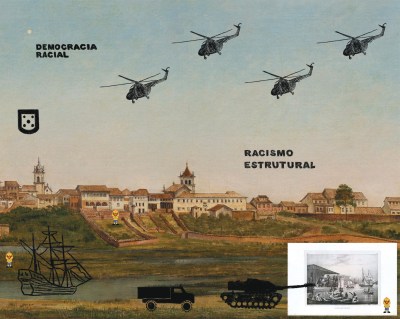
panorama da cidade de são paulo
jaime lauriano 29.9.2023The Museum of the City of São Paulo and the Department of Municipal Museums of the Municipal Department of Culture present Panorama of the City...Read more -

carolina maria de jesus: um brasil para os brasileiros
jaime lauriano 28.6.2023The works Monumento às Bandeiras (2016) and Ordem e Progresso (2015), by Jaime Lauriano are part of the selection of works in the exhibition 'Carolina...Read more -
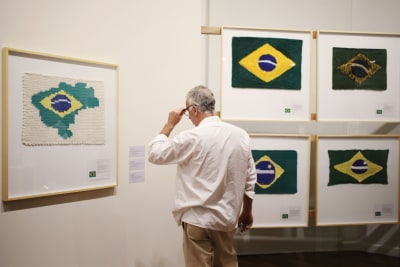
aqui é o fim do mundo
jaime lauriano 23.5.2023O Museu de Arte do Rio de Janeiro – MAR apresenta Aqui é o Fim do Mundo , exposição panorâmica da trajetória de quinze anos...Read more -
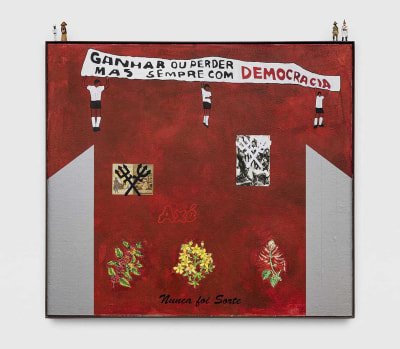
brasil futuro: as formas da democracia
elian almeida, jaime lauriano 30.1.2023Alongside President’s inauguration on January 1st, 2023, the Museu Nacional de Brasília organized the group exhibition Brasil Futuro: as Formas da Democracia [Future Brazil: The...Read more
Video
-
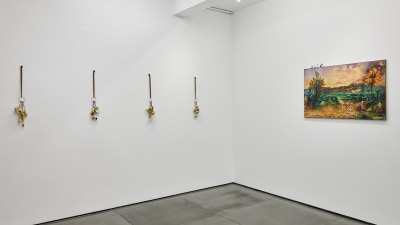
eu estou aqui com toda minha gente
jaime lauriano 2.12.2025Nara Roesler is pleased to present Eu estou aqui com toda minha gente [I Am Here with All My People], Jaime Lauriano ’s first solo...Read more -
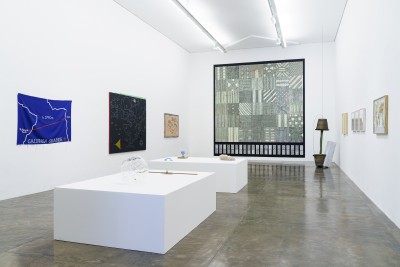
cosmos - other cartographies
laura vinci and nara roesler curatorial project 10.3.2025Cosmos - other cartographies , it's a group exhibition curated by artist Laura Vinci in collaboration with Nara Roesler’s curatorial project. The exhibition brings together...Read more -
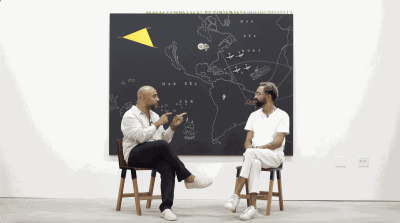
jaime lauriano talks with igor simões
6.2.2024On the occasion of Jaime Lauriano' s solo show Why don't you know about Western remains? at Nara Roesler New York, the artist joins the...Read more -
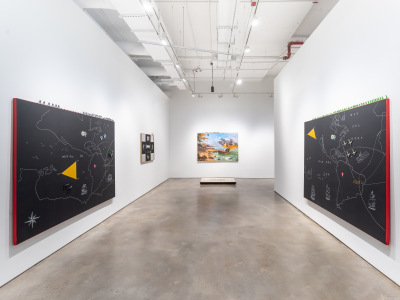
why don't you know about western remains?
jaime lauriano 23.1.2024Nara Roesler New York is pleased to present Why don't you know about Western remains? , Jaime Lauriano 's first solo exhibition in the United...Read more
